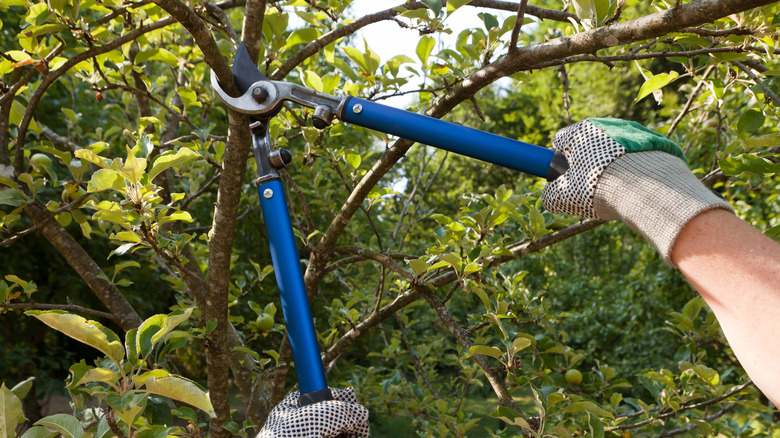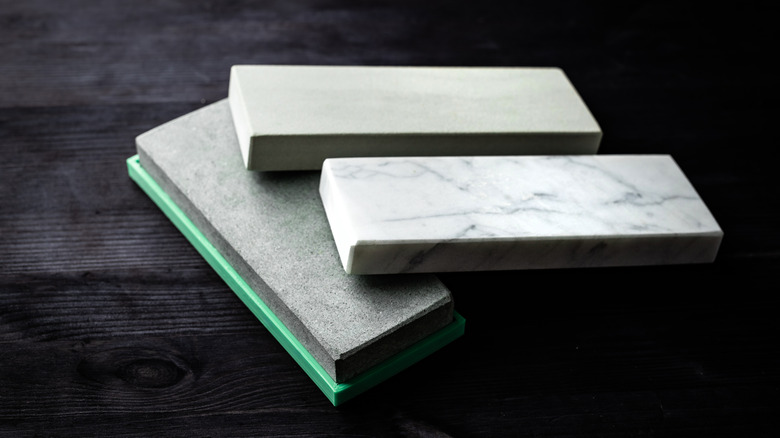The Best Method To Sharpen Your Branch Cutters At Home
We may receive a commission on purchases made from links.
Imagine it's the day that you finally have the time to tend your yard, only to find that your reliable branch cutters are not quite doing their job. Instead of a satisfying snip, you end up wrestling with stubborn branches due to dull blades. What should be a straightforward process is a complicated struggle.
Don't worry — dull blades are a common problem faced by many home gardeners. You don't need to immediately call a professional to prune your trees, as the solution against this headache is just to use a sharpening stone. It's as easy to use as it is accessible. This handy option is probably already in your garage or your garden kits, or maybe this is the perfect time to consider buying your own sharpening stone, such as a KEENBEST or one from Hiramware. It also doesn't need a power source to work, making it an inexpensive choice. Sharpening branch cutters with a sharpening stone only requires a bit of practice. All it really demands is some attention to the blade's angle and a consistent stroke. Before you know it, your cutters will have a sharp edge again that will swiftly slice through those branches in your garden.
A step-by-step guide to making your branch cutters sharp
To start the process, use a wrench to unscrew any bolts and handles on your cutters. Then, give your branch cutters a deep clean by washing and soaking them in hot water and dish liquid. This removes dirt or grime buildup on the surface. Don't be afraid to use a brush to scrub off any residue that won't easily come off. Then, rinse the blades thoroughly, wipe them with a cloth, and air dry completely.
Now it's time for the actual sharpening. You can first use a small sharpening stone, which could help you focus on the finer details of the blade edge. Hold the stone at an angle that matches the blade – usually 10 to 20 degrees – then slide it across the blade with consistent and even pressure. Matching the blade's angle is key since you might dull the blade faster if it's too steep or render it ineffective if it's too shallow. Switch to a larger stone to refine the sharpness and smooth out any imperfections. This two-step process helps keep the blade's edge durable while achieving a fine point.
Once you are satisfied with the sharpness is, reassemble the branch cutters, making sure that the blades are aligned and the screws are tight. Then, spray the blade and other moving parts with a generous coat of WD-40 to keep them lubricated and to prevent rust. Remember to wipe your branch cutters and spray them with a light layer of WD-40 after every use before storing them in a dry place. Make sure that you know what other gardening tools you should be sharpening regularly, too!

